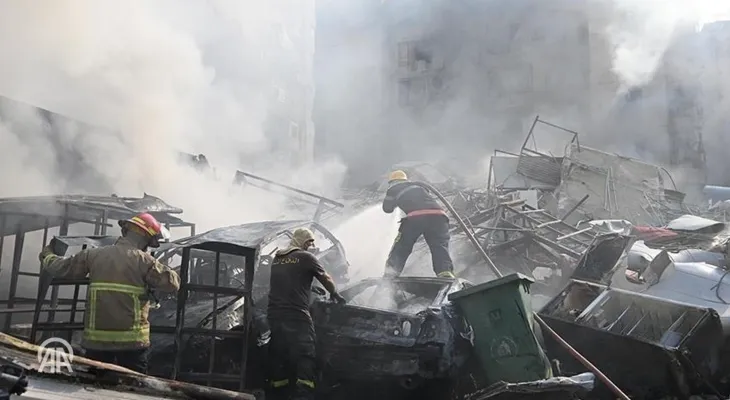Search here
Newspaper
Search here

Arab Canada News
News

Published: November 10, 2024
The Lebanese Ministry of Health announced on Saturday evening that the death toll from the ongoing Israeli aggression against the country since October 8, 2023, has risen to 3,136 martyrs and 13,979 injured. The ministry clarified in a statement that the Israeli airstrikes that targeted Lebanon last Friday resulted in the deaths of 19 martyrs and 91 injured.
According to the ministry, the number of victims on Friday was distributed between 7 martyrs and 37 injured in Nabatieh Governorate (South), 8 martyrs and 49 injured in the South Governorate (South), 4 martyrs and 3 wounded in the Bekaa Governorate (East), in addition to 2 injuries in Baalbek-Hermel Governorate (East).
The ministry pointed out that the number of women and children among the victims reached 812 martyrs and 3,802 injured, while 180 workers in the health sector were killed and 306 injured. The ministry also reported that Israel targeted 87 medical and emergency centers, 40 hospitals, and 244 vehicles belonging to the health sector, in addition to 65 hospitals and 213 emergency organizations being subjected to assaults.
This escalation comes amid clashes between Israel and Lebanese factions, including "Hezbollah," which began after the outbreak of the Israeli war on the Gaza Strip on October 7, 2023. Since September 23, Israel has expanded its operations to include vast areas of Lebanon, including the capital Beirut, through intensive airstrikes, and has started a ground invasion of the south, ignoring international warnings and UN resolutions.
For its part, "Hezbollah" responds daily by launching rockets, drones, and artillery shells targeting military sites and Israeli settlements. While Israel acknowledges some of its human and material losses, it imposes strict military censorship that prevents the full disclosure of the loss figures, according to observers.
The military escalation between Israel and "Hezbollah" reflects the heightened tensions in the Middle East, especially after the Israeli operations in the Gaza Strip, which led to reactions from various parties in the region. This situation reflects a history of conflict between Israel and Lebanon, especially with Hezbollah, where the area has witnessed previous confrontations, such as the July 2006 war, which caused widespread destruction and significant loss of life.
The current events show that there is a trend toward a new escalation that includes wide-ranging airstrikes and ground bombardments, raising fears of a comprehensive war whose effects could extend to other countries in the region. On the other hand, the daily response from "Hezbollah" with rockets, drones, and artillery shells shows an evolution in its military capabilities and a change in the rules of engagement compared to previous years.
Targeting infrastructure, especially hospitals and medical centers, is considered a serious violation of international humanitarian law, which stipulates the protection of civilians and medical facilities during armed conflicts. This exacerbates the humanitarian crisis, with large numbers of the dead and injured and difficulty in providing necessary healthcare due to the destruction of facilities.
On the other hand, it seems that Israel is imposing strict military censorship on its losses to prevent a negative impact on morale at home. This censorship may aim to maintain an image of military strength and internal cohesion, but it may hide the true scale of the losses it is facing.
The current situation indicates the possibility of an exacerbation of the conflict if diplomatic efforts cannot calm the tensions. International initiatives and warnings from the United Nations play an important role in this context, but they often face challenges in implementation on the ground.
Comments